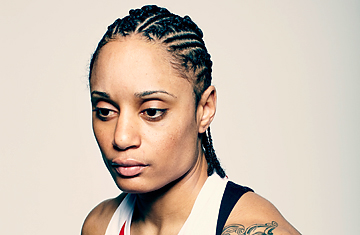
Boxing has always been an Olympic sport. The ancient Greeks wrapped their fists in leather strips in the 7th century B.C. In the modern Games, gold medals have launched the sport’s greatest figures: Muhammad Ali, Joe Frazier, George Foreman and Oscar De La Hoya all made their first appearances on the world stage with a victory in the Olympics.
This summer in London, the Games of the XXX Olympiad will present a historic debut. For the first time, female boxers will compete. It’s been 19 years since a teenage girl named Dallas Malloy went to U.S. federal court to win women the right to participate in amateur boxing. Now Americans are punching their way toward the first U.S. Olympic women’s boxing team. Just getting to London will be a tough fight. For these boxers, these Olympics are a limited test run. Only 36 women will be allowed to compete in three weight divisions: flyweight (112-lb. limit), lightweight (132 lb.) and middleweight (165 lb.). Meanwhile, some 250 men will box in 10 weight classes.
Men’s Olympic bouts last for three 3-min. rounds. The women’s are four rounds of 2 min. each. Debate flared when AIBA, the international organization governing amateur boxing, suggested women might be required to wear short skirts rather than trunks to make it easier to distinguish them from male boxers. After an uproar, AIBA agreed that boxers may wear trunks or skirts.
The three champions of the U.S. Olympic women’s boxing trials in February near Spokane, Wash., each had to win four bouts. They are fighting for a chance to make history.
Flyweight Marlen Esparza, 22, grew up watching boxing with her father. She was student-body president of her Pasadena, Texas, high school and graduated in the top 2% of her class, but she put college on hold to pursue this Olympic opportunity. Esparza has boxed for 10 years and has been the U.S. national champion every year since 2006. She was a bronze medalist at the 2006 world championships. At the trials, Esparza demonstrated her sharp and fleet-footed style with blinding hand speed and poised control.
Queen Underwood of Seattle is a violist who played in an orchestra for years. She loves the attention of the crowd when she boxes. “Queen can hurt you,” U.S. coach Joe Zanders has said of the 27-year-old lightweight, who has been boxing for nine years. “She has a nice smile, but she will get after you.” Underwood is an aggressive and dangerous power puncher with crisp delivery, enormous stamina and implacable calm. She was a bronze medalist at the world championships in 2010 and has been a U.S. national champion every year since 2007.
Middleweight Claressa Shields started boxing six years ago after her father told her the story of Muhammad Ali’s daughter Laila, who became a professional. Shields, a high school junior, is a two-time Junior Olympic champion and the 2011 National PAL champion. Olympic competitors must be at least 17, and Shields will turn 17 in March. She has wowed coaches with her extreme hand speed, well-schooled defense and counterpunching but most of all with her fiery attack strategy and ferocious barrage of heavy punches. On Feb. 18 she danced with joy at winning her weight division. The next day she was back at school in Flint, Mich.
In May the three will fly to Qinhuangdao, China, to compete in the 11-day world championships. The top eight finishers in each weight class will go to the London Games. An international committee will choose 12 additional boxers, four in each weight class, so each division will have 12 contenders. The women of nations from Poland to Afghanistan, from Mexico to South Korea, are in the gyms, preparing. And Esparza, Underwood and Shields are training hard.
More Must-Reads from TIME
- Cybersecurity Experts Are Sounding the Alarm on DOGE
- Meet the 2025 Women of the Year
- The Harsh Truth About Disability Inclusion
- Why Do More Young Adults Have Cancer?
- Colman Domingo Leads With Radical Love
- How to Get Better at Doing Things Alone
- Michelle Zauner Stares Down the Darkness
Contact us at letters@time.com